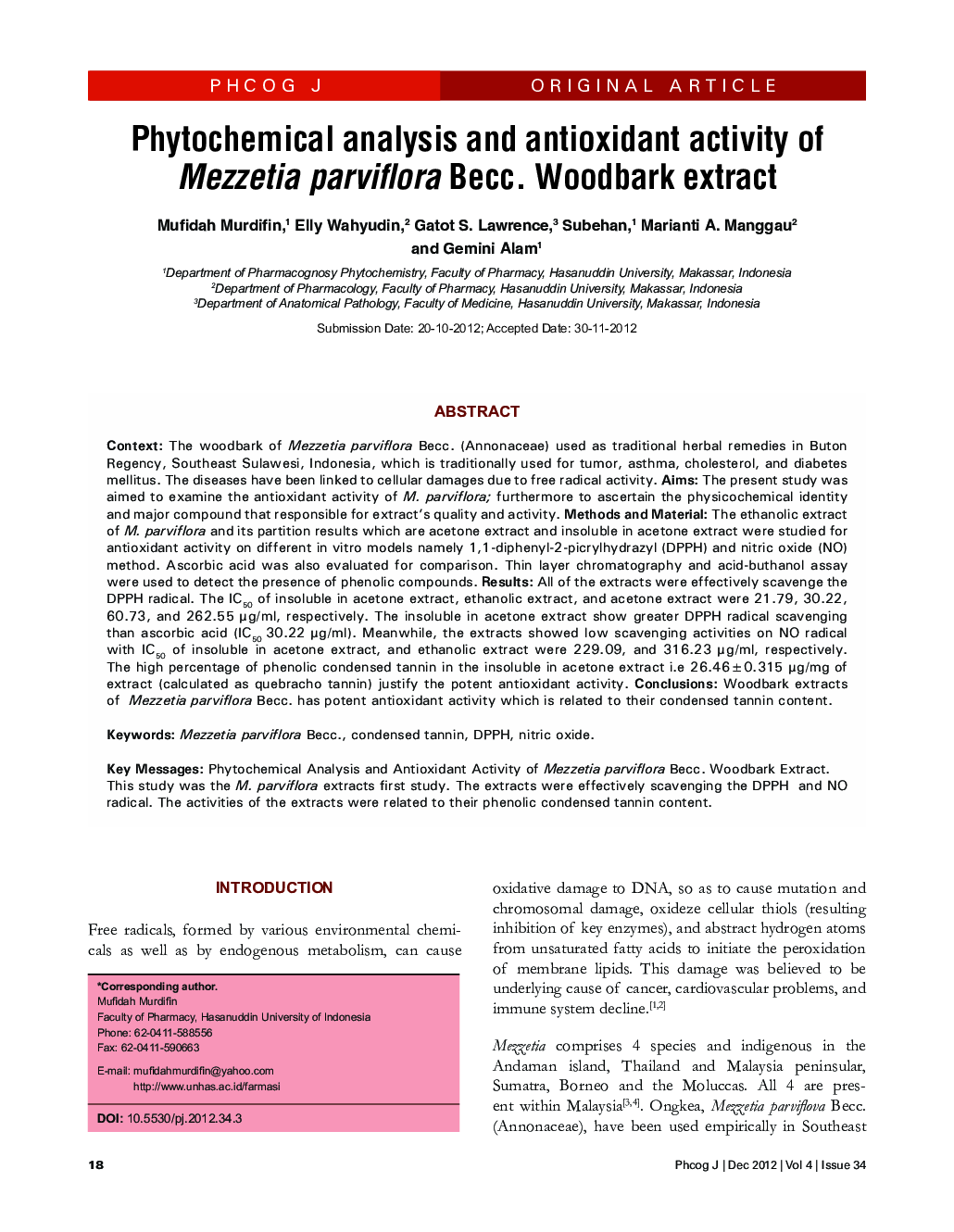| Article ID | Journal | Published Year | Pages | File Type |
|---|---|---|---|---|
| 2495734 | Pharmacognosy Journal | 2012 | 4 Pages |
Abstract
Context: The woodbark of Mezzefia parviflora Becc. (Annonaceae) used as traditional herbal remedies in Buton Regency, Southeast Sulawesi, Indonesia, which is traditionally used for tumor, asthma, cholesterol, and diabetes mellitus. The diseases have been linked to cellular damages due to free radical activity. Aims: The present study was aimed to examine the antioxidant activity of M. parviflora; furthermore to ascertain the physicochemical identity and major compound that responsible for extract's quality and activity. Methods and Material: The ethanolic extract of M. parviflora and its partition results which are acetone extract and insoluble in acetone extract were studied for antioxidant activity on different in vitro models namely 1,1-diphenyl-2-picrylhydrazyl (DPPH) and nitric oxide (NO) method. Ascorbic acid was also evaluated for comparison. Thin layer chromatography and acid-buthanol assay were used to detect the presence of phenolic compounds. Results: All of the extracts were effectively scavenge the DPPH radical. The IC50 of insoluble in acetone extract, ethanolic extract, and acetone extract were 21.79, 30.22, 60.73, and 262.55 μg/ml, respectively. The insoluble in acetone extract show greater DPPH radical scavenging than ascorbic acid (IC50 30.22 μg/ml). Meanwhile, the extracts showed low scavenging activities on NO radical with IC50 of insoluble in acetone extract, and ethanolic extract were 229.09, and 316.23 μg/ml, respectively. The high percentage of phenolic condensed tannin in the insoluble in acetone extract i.e 26.46±0.315 μg/mg of extract (calculated as quebracho tannin) justify the potent antioxidant activity. Conclusions: Woodbark extracts of Mezzefia parviflora Becc. has potent antioxidant activity which is related to their condensed tannin content.
Keywords
Related Topics
Life Sciences
Biochemistry, Genetics and Molecular Biology
Molecular Medicine
Authors
Mufidah Murdifin, Elly Wahyudin, Gatot S. Lawrence, Subehan Subehan, Marianti A. Manggau, Gemini Alam,
